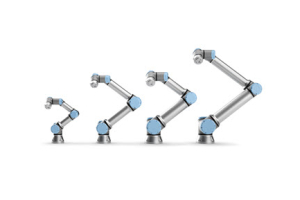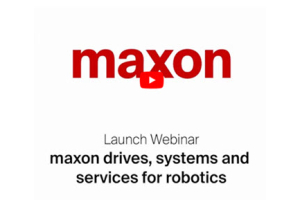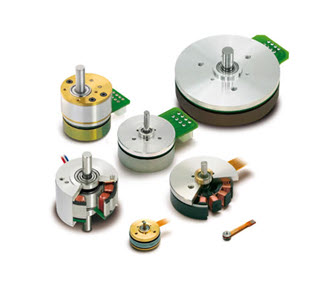
Introduction
What is a DC Servo Motor?
A DC servo motor is a type of electrical device designed to precisely control position, velocity, and acceleration. It consists of a direct current (DC) motor coupled with a control circuit and a feedback mechanism such as an encoder. This setup enables the continuous adjustment of the motor's state, making it a cornerstone in applications that demand precision and dynamic performance.
Working Principle
How Does a DC Servo Motor Operate?
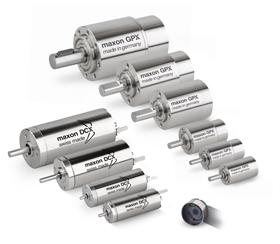

The primary function of a DC servo motor is to convert electrical energy into mechanical energy. Its control circuit interprets input signals (usually indicating the desired velocity or position), adjusting the current or voltage supplied to the motor accordingly. This feedback system constantly monitors the motor's state, relaying data back to the control circuit to align the motor's actual state with the desired parameters, ensuring higher accuracy and fine-tuned control.
Types and Variants
What are the Different Types of Servo Motors?
Servo motors are generally categorized into three types: AC servo motors, DC servo motors, and brushless DC servo motors. The most used servo motor is the brushless DC variant because of its high efficiency and consistent performance coupled with lower maintenance requirements compared to brushed types.
Control and Operation
How to Control and Run a DC Servo Motor?
Controlling a DC servo motor involves using a specialized controller which processes signals from a microcontroller or computer system to manage the motor's speed or position. Pulse Width Modulation (PWM) is a common technique used, where the width of the control pulses is varied to control the motor's speed effectively. Sophisticated algorithms can further refine motor control, ensuring dynamic and responsive operation.
How Can the Speed of a DC Servo Motor be Controlled?
The speed is managed through the variation of input signals, typically modulating the width of control pulses to influence the motor's operational speed precisely. This approach ensures seamless integration into various applications requiring different speed ranges and control dynamics.
Characteristics and Performance
What are the RPM Specifications for a Servo Motor?
Servo motors can operate across a broad RPM range, depending on their specific design and intended application. The RPM can range from a few hundred to several thousand. The detailed specifications, including the maximum RPM, are often outlined in the product's technical datasheet.
Do Servos Retain Position Memory?
While servos don't inherently retain position memory after power is turned off, incorporating components like absolute encoders can enable them to remember their position even after power interruption.
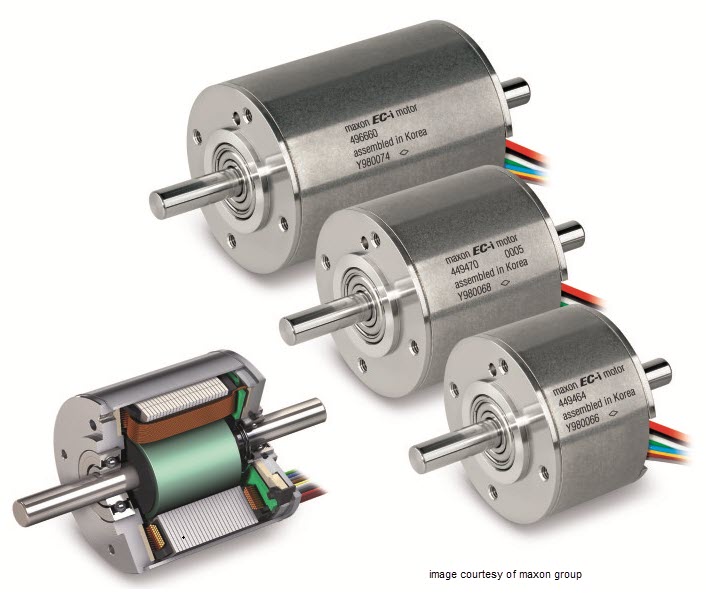

Advantages and Disadvantages
Benefits of Utilizing DC Servo Motors
DC servo motors provide several advantages, including high precision control, substantial torque even at low speeds, and a feedback loop system that facilitates real-time adjustments, enhancing reliability and performance consistency.
What are the Drawbacks of Using Servo Motors?
Servo motors are complex systems, which can sometimes lead to higher initial costs and more specialized maintenance. They can also be more susceptible to wear and tear, especially in models with brushes, requiring more frequent upkeep to maintain optimal functionality.
Handling and Maintenance
The life expectancy of a servo motor can vary widely based on several critical factors that influence its operational lifespan. Here, we delve into these factors and provide insights on how to potentially extend the life expectancy of these motors:
- Build Quality and Materials: High-quality materials and meticulous manufacturing processes significantly contribute to a servo motor's longevity. The use of premium components, such as robust bearings and superior insulation materials, can stave off wear and tear, promoting a longer operational life.
- Operating Conditions: Servo motors deployed in environments with controlled temperatures and minimal contaminants tend to have a longer lifespan. Exposure to extreme temperatures, moisture, and corrosive environments can accelerate the degradation process, shortening life expectancy.
- Usage Patterns: The life expectancy is closely tied to how the motor is used. Motors that operate continuously at high speeds or under heavy loads might experience a reduced lifespan compared to those used in less strenuous conditions. Implementing proper duty cycles can help in mitigating excessive wear and potentially prolong the motor's life.
- Maintenance Practices: Regular maintenance, including timely inspections and servicing, can detect and prevent issues that might lead to premature failure. This may encompass the lubrication of moving parts, checking for signs of wear in mechanical components, and ensuring that the electrical parts are functioning optimally.
- Quality of Installation: Proper installation is vital in ensuring a prolonged lifespan. This includes ensuring that the motor is not misaligned, which can lead to uneven wear and tear, and that electrical connections are secure and correctly configured to prevent electrical failures.
- Technological Advances: Over the years, technological advancements have contributed to the extended lifespan of newer servo motor models. Innovations such as brushless designs have reduced the number of wear-prone components, potentially adding to the motor's operational life.
- Feedback System and Control Quality: The quality of the control system and feedback mechanisms employed can influence the lifespan of a servo motor. A well-tuned control system can operate the motor more efficiently, reducing unnecessary strain and thereby extending its life.
Comparative Analysis
Servo Motors vs. Other Motor Types
Servo motors are often preferred over stepper motors for applications requiring high torque at high speeds and precise control. When compared to brushed DC motors, they offer superior precision and control, making them more suitable for complex applications. To learn about this subject in more detail, check out our in-depth whitepaper on stepper vs servo motors.
Applications and Usages
Where are DC Servo Motors Commonly Used?
DC servo motors have carved a niche in a myriad of industries owing to their precision and reliability. Here, we dissect the sectors where these motors are predominantly utilized and explain why they are the favoured choice in such settings.
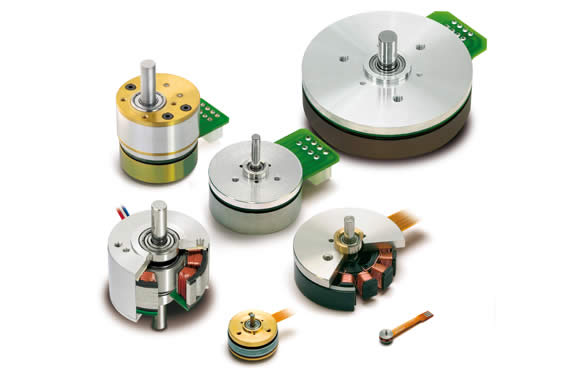

- Robotics
- Industrial Robots: These motors find extensive applications in industrial robots where precision, speed, and reliability are critical. The robots undertake tasks like welding, painting, assembly, pick and place for printed circuit boards, packaging and labelling, palletizing, product inspection, and testing. DC servo motors facilitate precise control over the robot's arm and manipulator movements.
- Service Robots: In service robots, which perform tasks ranging from cleaning to medical assistance, DC servo motors ensure smooth and controlled operations. These motors can be programmed to perform intricate tasks where high repeatability and reliability are necessary.
- CNC Machinery
- Milling Machines: In CNC milling machines, DC servo motors provide the required torque and precision during the material removal process, ensuring highly accurate and repeatable results.
- Lathes: DC servo motors control the cutting speed and feed rate in CNC lathes, offering high precision in shaping and forming materials, which is crucial for producing components with strict tolerance levels.
- Automated Manufacturing
- Conveyor Systems: In manufacturing lines, these motors drive conveyor belts, ensuring the consistent and efficient movement of materials with the ability to precisely control the speed and position of the conveyor system.
- Assembly Lines: In automated assembly lines, DC servo motors are employed to control robotic arms and other machinery to carry out complex assembly tasks with high precision and speed, enhancing productivity and reducing errors.
- Intricate Positioning Systems
- Antenna Positioning: These motors are used in satellite antenna positioning systems where very slight adjustments can be critical to maintain optimal signal reception. The high precision of DC servo motors allows for fine-tuning of antenna positions to achieve the best signal quality.
- Optical Instrument Positioning: In optical systems like telescopes and microscopes, DC servo motors enable fine adjustments to the positioning of lenses and other optical elements, allowing for high-precision imaging and observation.
- Medical Equipment
- Surgical Robots: In the healthcare sector, these motors are utilized in surgical robots to facilitate highly precise movements, enabling surgeons to perform complex procedures with increased accuracy and minimal invasiveness.
- Medical Imaging: DC servo motors play a crucial role in medical imaging equipment like MRI and CT scanners, where they control the movement of the imaging components to acquire detailed and accurate images.
- Aerospace and Defense
- Drone Navigation: In the aerospace sector, DC servo motors find application in drone navigation systems, providing precise control over the drone's flight path and stability.
- Weapon Targeting Systems: In defence applications, these motors are used in weapon targeting systems, facilitating highly accurate control over the positioning of weapon platforms, thus enhancing targeting precision.
- Automotive Industry
- Electric Power Steering: In the automotive industry, these motors are used in electric power steering systems, offering smooth and precise control over steering functions, improving driving safety and comfort.
Can DC Servo Motors Run Continuously?
In modern industry sectors, the requirement for uninterrupted, reliable, and efficient operations has given rise to specialized servo motor models designed for continuous operation. These units stand out due to their enhanced heat dissipation features, including advanced cooling systems which prevent overheating and facilitate optimal performance levels over extended periods.
Complementing this, their construction incorporates high-quality materials and sophisticated manufacturing processes that resist wear and tear effectively, thereby ensuring longevity and consistent mechanical prowess even in the face of relentless operation. Furthermore, these models are characterized by their efficient power consumption traits, fostering energy efficiency while averting issues related to power fluctuations and overheating.
Moreover, continuous operation servo motors feature finely tuned integrated feedback systems, facilitating constant monitoring and precise adjustments to maintain desired speed and torque levels under fluctuating load conditions. This harmonious operation is also credited to their specialized bearing and lubrication systems, which work tirelessly to reduce friction and extend the lifespan of the motor.
Recognizing the diverse needs of different applications, manufacturers offer customization options, tailoring these motors to meet specific industry demands optimally. These adaptable and resilient motor models have become indispensable assets in various fields, offering unparalleled reliability and precision, thereby fostering a seamless and efficient operational landscape in industries where downtime is simply not an option.
Troubleshooting
What Occurs When a Servo is Connected Incorrectly?
Connecting a servo motor incorrectly can have a cascade of repercussions that may not only disrupt normal functioning but can potentially cause permanent damage to the motor. Here, we expand upon the varied consequences and the preventive measures that should be considered.
Potential Consequences
- Non-responsiveness: One of the immediate issues you might encounter is non-responsiveness. The motor may fail to initiate any movement or response, a clear indication that the wiring might be incorrect.
- Erratic Behavior: Another alarming sign could be erratic behaviour, where the motor operates unreliably with sudden jolts or movements, which could be potentially harmful to the connected systems or components.
- Electrical Failure: In more severe circumstances, an incorrect connection could lead to electrical failures. This could mean the frying of internal circuits, thereby rendering the servo motor unusable.
- Overheating: Incorrect connections might result in increased resistance and overheating. Not only does this risk damaging the motor, but it also can be a potential fire hazard in extreme cases.
- Reduced Lifespan: Continuous operation with incorrect connections can significantly reduce the lifespan of the servo motor, as it may be constantly working under strained conditions.
Preventive Measures
- Following Manufacturer Guidelines: It is paramount to adhere to the manufacturer's guidelines while setting up the servo motor. These guidelines provide detailed information on the correct wiring and connection protocols to prevent mishaps.
- Professional Installation: In case of any uncertainties, it's advisable to seek professional help for the installation process. Experts can ensure the correct setup, minimizing the risks associated with incorrect connections.
- Testing Before Full-Scale Operation: Before integrating the servo motor into the full-scale operation, conducting preliminary tests can help identify any incorrect connections and rectify them before they can cause severe damage.
- Using Compatible Accessories: Using accessories like connectors, cables, and power supplies that are compatible with the specific servo motor model can prevent potential connection errors.
Seeking Technical Support
In case you suspect that the servo has been connected incorrectly, it is recommended to consult technical support promptly. The support teams can guide in diagnosing and rectifying the issue, helping prevent any further damage or malfunction.
Conclusion
DC servo motors stand as powerful tools in the electrical machinery sector, offering precise control and high efficiency in a range of applications. Despite their higher costs and complexity, their benefits typically outweigh these drawbacks, positioning them as a favourite in modern automation systems. This guide seeks to provide a comprehensive insight into DC servo motors, fostering a deeper understanding and appreciation for their role in advancing numerous industries.
We hope this guide has been insightful and encourages further exploration into the capabilities and opportunities presented by DC servo motors in pioneering innovative solutions in various fields.

